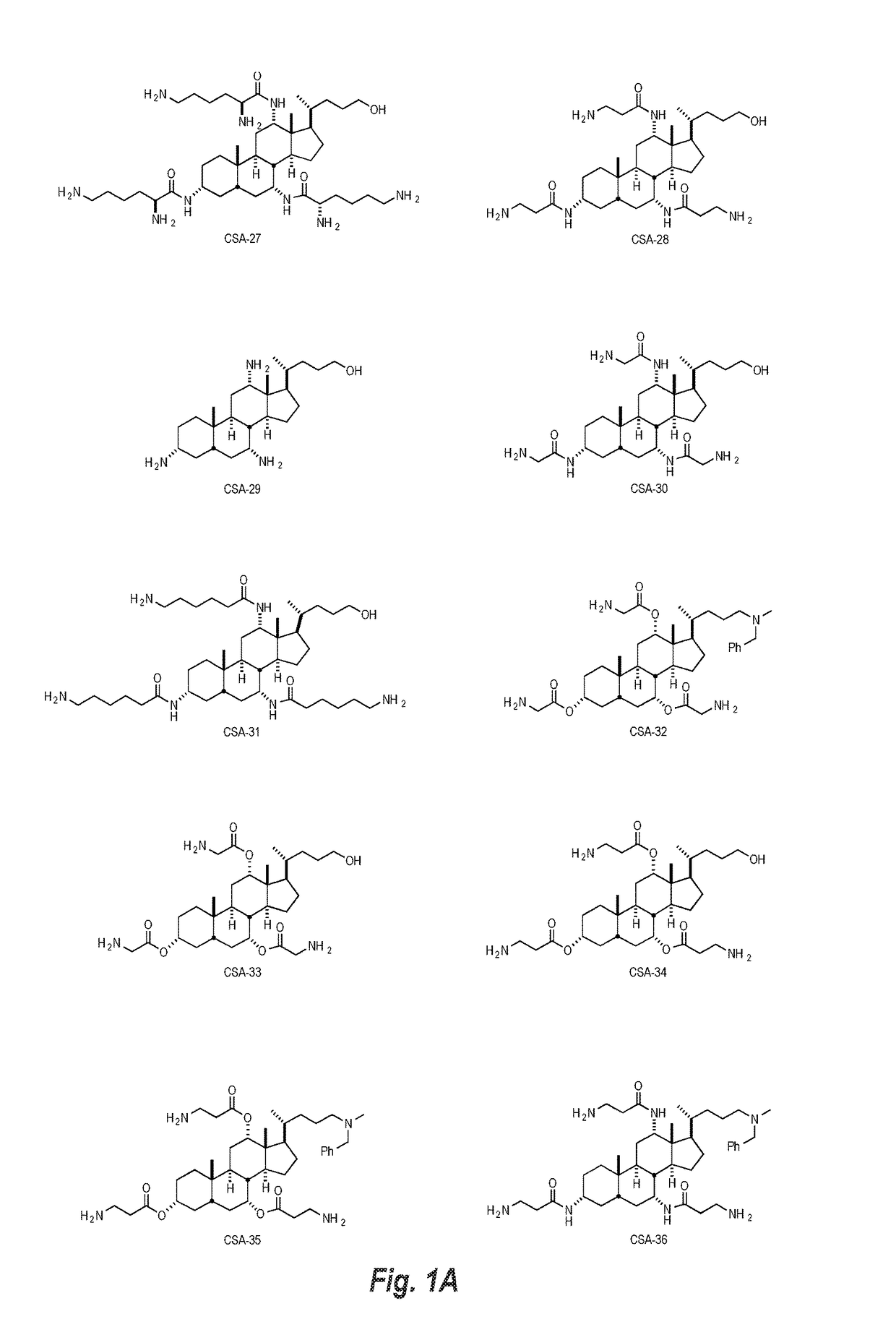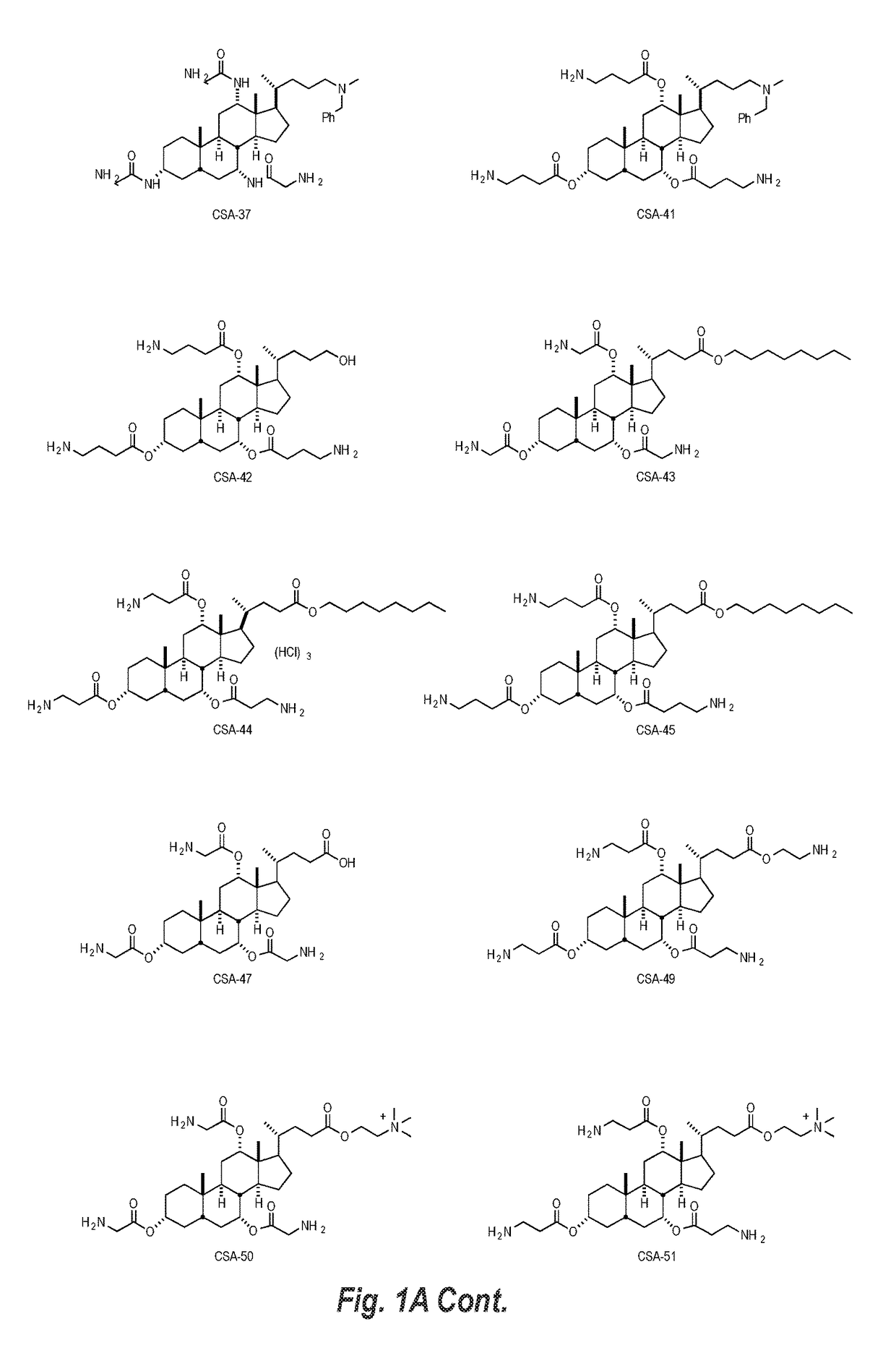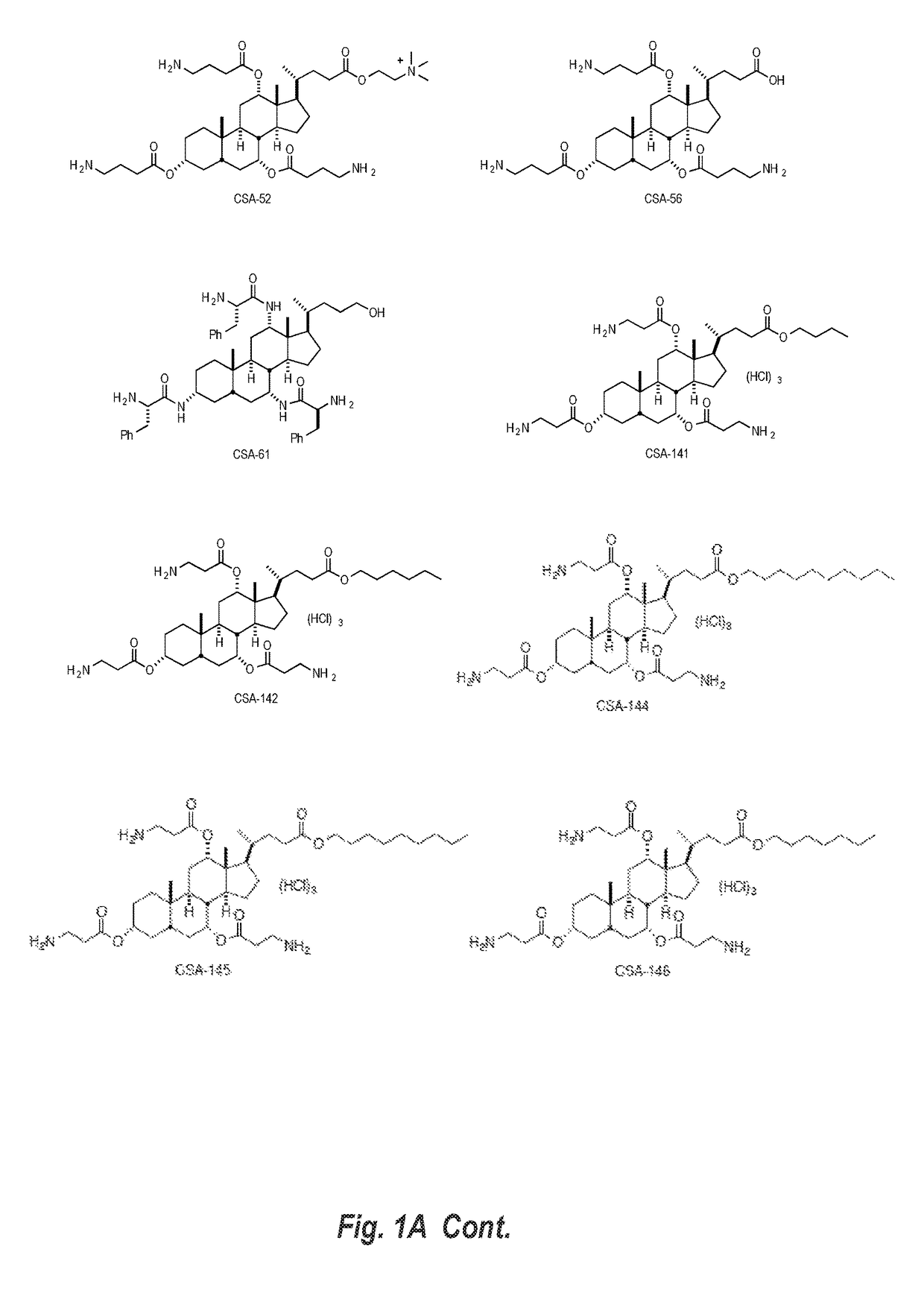Cationic steroidal antimicrobial compositions for the treatment of dermal tissue
a technology of dermal tissue and composition, applied in the direction of antibacterial agents, drug compositions, prostheses, etc., can solve the problems of inadvertent introduction of microorganisms into the associated tissues, infection and subsequent medical complications, and contamination of treatment compositions, so as to reduce infection risk, reduce fouling, and reduce infection-related inflammation
- Summary
- Abstract
- Description
- Claims
- Application Information
AI Technical Summary
Benefits of technology
Problems solved by technology
Method used
Image
Examples
example 1
[0063]To determine the role of synthetic ceragenins CSA-13, 44 and 90 in treating or reducing inflammation, mesenchymal stem cells (MSC), targeted mRNA panels from SABiosciences, and primary cells from Lonza were selected and utilized. Cells were purchased from Lonza.com and used fresh for each test using recommended media and culture conditions.
[0064]After treatment, mRNA was isolated using Qiagen RNeasy Mini Kit®, and quantified using a NanoDrop 2000® by UV at 260 nm and 260 / 280 ratio for purity. cDNA was made using a First Strand Kit® from SABiosciences and processed for real time PCR using a kit from the same company for selected analysis of wound healing pathways. Results from q-PCR were uploaded to the SABiosciences site and to Ingenuity.com web site for analysis and pathway mapping.
[0065]On day 1, primary human MSC cells were plated at 200,000 cells / well using 6-well plates with 3 ml of recommended media—hMSC Basal Medium+BulletKit (50 ml Growth Supplement, 10 ml L-glutamine,...
example 2
[0071]IL-6 is a marker of systemic inflammation. Female C57 / BL6 mice were infected in the respiratory tract with a non-lethal dose of P. aeruginosa as a model of pneumonia. One cohort (n=6) also received 80 mg / kg CSA-13; a second cohort (n=6) also received 40 mg / kg CSA-13; a third (n=6) received no CSA treatment; and a fourth (n=6) was not infected. Examination of IL-6 levels in the kidneys 24 hours post-infection demonstrated that those infected animals not treated with CSA had IL-6 levels >15 times those of control and 5-10 times higher than those of the CSA-treated animals. Thus, treatment with CSA significantly reduced kidney IL-6 levels in a pneumonia model.
example 3
[0072]CSA-131 (bis-DNS salt) was used in this Example. This material is a stable, colorless solid and is insoluble in cyanoacrylate. To ensure uniform distribution of CSA-131 in the cyanoacrylate polymer, the solid was micronized using a jet mill to give an average particle size of 200 nm. The resulting powder was added to cyanoacrylate to give a 5% (w / w) mixture, which was vigorously agitated. No immediate change in viscosity was observed, and the mixture remained non-viscous for more than 15 min.
[0073]The substrate onto which the CSA-131-cyanoacrylate mixture was applied was small (4 mm i.d., 5 mm length) PVC tubes. This substrate was chosen because it had been used previously to evaluate antimicrobial efficacy of ceragenins eluting from polymers. Tubes were “skewered” on 22 gauge needles to allow efficient manipulation.
[0074]Tubes were immersed in the CSA-131-cyanoacrylate mixture described above with a residence time of 15 sec. The applied glue was then allowed to polymerize wit...
PUM
| Property | Measurement | Unit |
|---|---|---|
| temperature | aaaaa | aaaaa |
| particle size | aaaaa | aaaaa |
| particle size | aaaaa | aaaaa |
Abstract
Description
Claims
Application Information
 Login to View More
Login to View More - R&D Engineer
- R&D Manager
- IP Professional
- Industry Leading Data Capabilities
- Powerful AI technology
- Patent DNA Extraction
Browse by: Latest US Patents, China's latest patents, Technical Efficacy Thesaurus, Application Domain, Technology Topic, Popular Technical Reports.
© 2024 PatSnap. All rights reserved.Legal|Privacy policy|Modern Slavery Act Transparency Statement|Sitemap|About US| Contact US: help@patsnap.com










